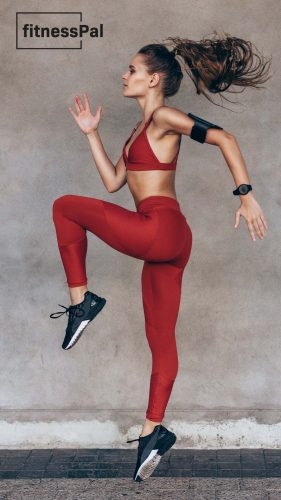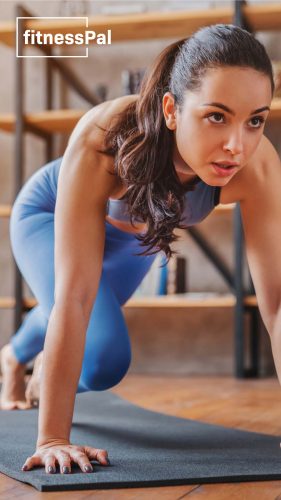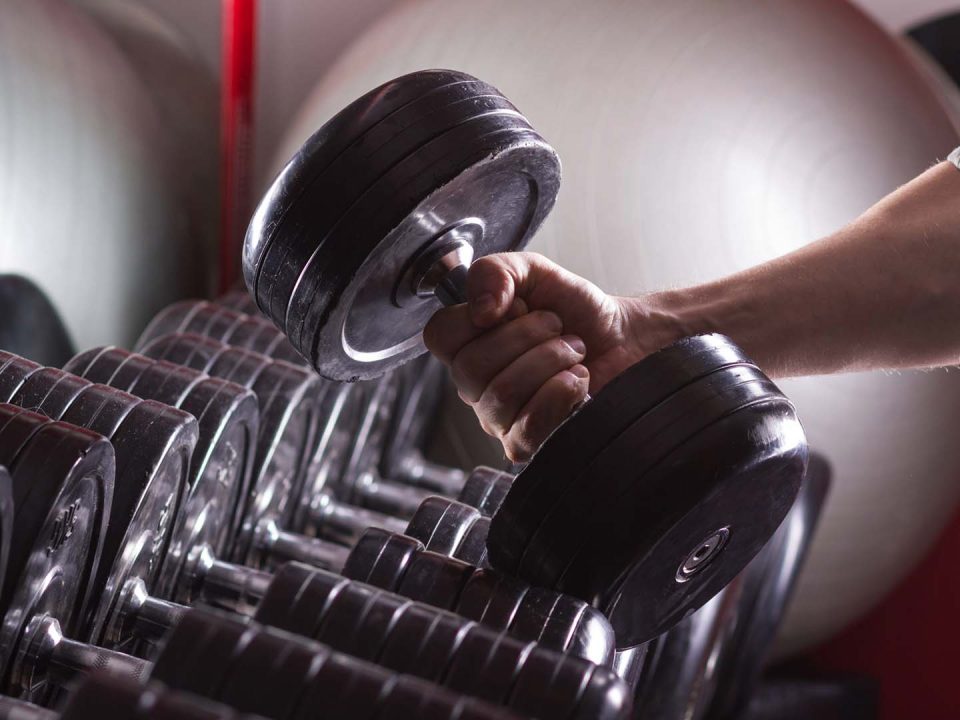Table of contents
- Cardiorespiratory Fitness Improvements in Inactive Adults
- Bodyweight vs. Machine-Based Training: A Comparison
- Physical Fitness Parameters Improved by Bodyweight Exercises
- The Effectiveness of High-Intensity Bodyweight Training
- Modifying Bodyweight Exercises for Different Fitness Levels
- The Future of Bodyweight Training
Forget expensive gym memberships and bulky equipment. Your body is all you need for a powerful workout. Bodyweight training is revolutionizing fitness, offering a simple yet effective way to build strength, endurance, and overall health. This approach uses your own body as resistance, making it accessible to everyone, anywhere.
Recent studies show impressive results from bodyweight exercises. A publication from MD Anderson Cancer Center highlights that regular strength training, including bodyweight exercises, can significantly improve overall fitness and reduce disease risk. This means you're not just getting stronger – you're investing in your long-term health.
But how effective is it really? Healthline reports that exercises like push-ups, squats, and lunges can build strength and sculpt your body just as effectively as weight training. These simple movements target multiple muscle groups, providing a full-body workout without a single dumbbell.
The best part? Bodyweight training is incredibly versatile. Whether you're a beginner or a fitness pro, there's always a way to modify exercises to suit your level. As demonstrated in a popular YouTube workout by Juice and Toya, exercises can be adjusted for both beginners and advanced users, ensuring everyone can benefit from this training method.
Ready to unleash your body's potential? Bodyweight training is more than a trend – it's a powerful tool for achieving your fitness goals, no weights required.
Cardiorespiratory Fitness Improvements in Inactive Adults
Bodyweight training packs a powerful punch for inactive adults looking to boost their cardiorespiratory fitness. Research shows that simple bodyweight exercises can significantly enhance VO₂ peak and peak power output. These improvements translate to better endurance, easier breathing during physical activities, and increased overall energy levels.
Don't underestimate the impact of push-ups, squats, and lunges on your heart and lungs! A health publication from MD Anderson Cancer Center highlights that regular strength training, including bodyweight exercises, can improve overall physical fitness and reduce the risk of various diseases. This means you're not just building muscle – you're also strengthening your cardiovascular system.
By incorporating bodyweight exercises into your routine, you're giving your heart and lungs a workout too. Think of it as a two-for-one deal: you're building strength and boosting your cardio fitness simultaneously. And the best part? You can do it anywhere, anytime, without any equipment.
Ready to get started? Try a simple circuit of jumping jacks, mountain climbers, and burpees. You'll feel your heart rate climb and your breathing deepen – that's your cardiorespiratory system getting stronger with every rep!
Bodyweight vs. Machine-Based Training: A Comparison
Bodyweight training packs a powerful punch when it comes to building strength and muscle. You might be surprised to learn that it can be just as effective as hitting the gym machines. Let's break it down.
Strength gains from bodyweight exercises are impressive. Push-ups, squats, and lunges can sculpt your body and boost your power. These moves target multiple muscle groups at once, giving you a full-body workout. Plus, they improve your balance and coordination.
Machine-based training has its perks too. It's great for isolating specific muscles and tracking progress easily. But don't underestimate the humble bodyweight exercise. It offers a more functional strength that translates well to everyday activities.
Muscle hypertrophy, or growth, is achievable with both methods. The key is progressive overload - gradually increasing the challenge. With bodyweight training, you can do this by adjusting your form, adding reps, or trying more advanced variations.
A major advantage of bodyweight training is its convenience. No equipment needed means you can work out anytime, anywhere. This flexibility often leads to more consistent training, which is crucial for seeing results.
Remember, the best training method is the one you'll stick to. Bodyweight exercises offer a simple, effective way to build strength and muscle, rivaling machine-based workouts in many aspects.
Physical Fitness Parameters Improved by Bodyweight Exercises
Bodyweight exercises pack a powerful punch when it comes to boosting your overall fitness. These simple yet effective movements can significantly enhance your muscle endurance, giving you the stamina to power through daily activities with ease. Imagine climbing stairs without getting winded or carrying groceries without breaking a sweat. That's the magic of improved muscle endurance.
But it doesn't stop there. Your lower-body power gets a serious upgrade too. Squats, lunges, and jump exercises target your legs and glutes, building explosive strength that translates to better performance in sports and everyday life. You'll notice improved balance, agility, and the ability to generate force quickly.
Flexibility is another winner in the bodyweight game. As you move through various exercises, your muscles and joints become more pliable. This increased range of motion not only helps prevent injuries but also enhances your overall physical performance.
Perhaps one of the most exciting benefits is the boost to your metabolism. Regular bodyweight training can increase your muscle mass, which in turn revs up your metabolic rate. This means you'll burn more calories even when you're not exercising. Plus, it's a powerful tool in reducing the risk of various diseases, including obesity, diabetes, and heart disease.
Healthline backs this up, noting that exercises like mountain climbers and step-ups can significantly improve your muscle endurance and lower-body power. These movements challenge your body in ways that promote functional strength, making everyday tasks easier and more efficient.
Remember, consistency is key. By incorporating bodyweight exercises into your routine, you're not just building a stronger body – you're investing in a healthier, more vibrant future. So, are you ready to harness the power of your own body weight?
The Effectiveness of High-Intensity Bodyweight Training
Short, high-intensity bodyweight training sessions pack a powerful punch. These workouts can significantly boost your strength and fitness in less time than traditional workouts. High-Intensity Interval Training (HIIT) protocols, which often include bodyweight exercises, have been shown to enhance exercise tolerance and cardiorespiratory fitness.
A study published in the Journal of Strength and Conditioning Research found that a high-intensity bodyweight training protocol performed just three times a week led to substantial improvements in overall fitness. Participants saw increases in muscle endurance, aerobic capacity, and lower-body power.
Healthline suggests combining 5-6 bodyweight exercises into a routine and practicing it two to three times a week for optimal results. This approach can lead to significant improvements in strength and fitness, proving that you don't need hours in the gym to see results.
The beauty of high-intensity bodyweight training lies in its efficiency. You can achieve a full-body workout in as little as 20-30 minutes. This makes it an ideal option for those with busy schedules or limited access to gym equipment.
Remember, consistency is key. Regular high-intensity bodyweight sessions can lead to impressive gains in strength, endurance, and overall fitness. So, are you ready to push your limits and see what your body can do?
Modifying Bodyweight Exercises for Different Fitness Levels
Bodyweight exercises are incredibly versatile. You can easily adapt them to suit your fitness level, whether you're just starting out or you're a seasoned athlete. Let's explore some simple ways to modify these exercises.
For beginners, start with easier variations. Push-ups, for instance, can be done against a wall or with your knees on the ground. This reduces the load on your upper body, making the exercise more manageable. As you gain strength, progress to standard push-ups on the floor.
Adjusting the number of repetitions is another effective way to modify exercises. If you're new to squats, start with 5-10 reps and gradually increase as you build strength and endurance. Advanced users can aim for higher rep counts or add plyometric elements like jump squats.
Pace is also a key factor. Slow, controlled movements can increase muscle tension and boost strength gains. On the flip side, faster tempos can enhance cardiovascular benefits and calorie burn.
Remember, consistency is key. Juice and Toya, fitness experts on YouTube, emphasize the importance of regular practice. They suggest modifying exercises to ensure you can complete your workout, regardless of your fitness level.
By tailoring bodyweight exercises to your abilities, you can create an effective, personalized workout routine. Start where you are, and progressively challenge yourself. With time and dedication, you'll see impressive improvements in your strength and overall fitness.
The Future of Bodyweight Training
Bodyweight training is set to revolutionize the fitness world. As technology advances, we'll likely see more interactive apps and virtual reality programs guiding users through personalized bodyweight routines. These innovations will make strength training more accessible and engaging for everyone.
The growing popularity of bodyweight exercises will continue, especially as people recognize their effectiveness and convenience. Expect to see more hybrid workout programs combining bodyweight moves with minimal equipment. This trend aligns perfectly with the increasing focus on home workouts and flexible fitness solutions.
As research progresses, we'll gain deeper insights into optimizing bodyweight exercises for specific health outcomes. This knowledge will help tailor routines for different age groups and fitness levels, making strength training without weights a cornerstone of future fitness approaches.






